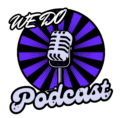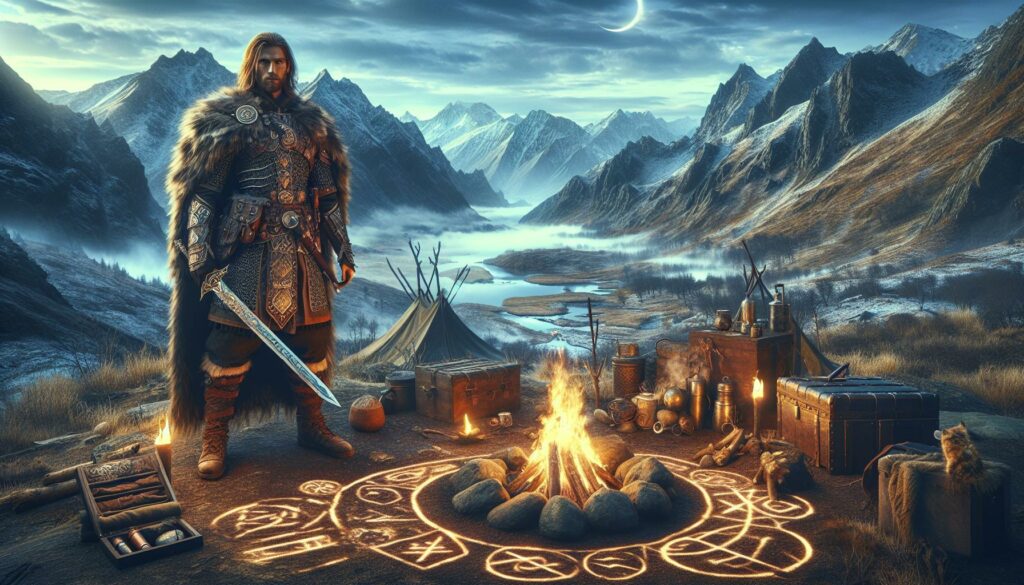
As a content creator I’ve witnessed the incredible evolution of multimedia content over the past decade. From simple blog posts to immersive video experiences the digital landscape has transformed how we connect with our audience.
I’ll share my insights on creating compelling multimedia content that captivates viewers and drives engagement. Whether you’re a seasoned professional or just starting your creative journey understanding the fundamentals of multimedia content creation is essential in today’s digital world. From choosing the right tools to mastering various formats like video audio and interactive elements you’ll learn how to craft content that stands out in a crowded online space.
Key Takeaways
- Multimedia content creation combines multiple formats (text, images, videos, audio, animations) to create engaging digital experiences that stand out in today’s competitive landscape
- Professional tools like Adobe Creative Suite offer advanced capabilities, while free alternatives like Canva and Audacity provide accessible entry points for beginners
- Strategic planning is crucial – set clear goals, understand your audience demographics, and choose the right distribution channels based on content type and format requirements
- Technical best practices vary by medium: video requires proper lighting and post-production workflow, audio needs careful sound design, and visuals must follow design principles and optimization guidelines
- Content performance should be measured across key metrics like view duration, engagement rate, and conversion rate using specialized analytics tools for each platform
- Success requires balancing quality production values, strategic distribution, and consistent performance tracking to optimize content strategy over time
Multimedia Content Creation
Multimedia content creation combines multiple digital media formats into a single cohesive piece of content. I create immersive experiences by integrating text, images, videos, audio, animations, and interactive elements.
Types of Multimedia Content
- Videos: Live-action recordings, animations, tutorials, product demonstrations, vlogs
- Images: Infographics, photographs, illustrations, memes, GIFs
- Audio: Podcasts, music, sound effects, voice-overs, audiobooks
- Interactive Elements: Quizzes, polls, surveys, calculators, 360-degree videos
- Mixed Media: Presentations, webinars, digital magazines, e-learning modules
| Content Type | Professional Tools | Entry-Level Options |
|---|---|---|
| Video Editing | Adobe Premiere Pro, DaVinci Resolve | OpenShot, iMovie |
| Image Creation | Adobe Photoshop, Illustrator | Canva, GIMP |
| Audio Production | Adobe Audition, Pro Tools | Audacity, GarageBand |
| Animation | Adobe After Effects, Cinema 4D | Blender, Animaker |
| Interactive Content | Adobe XD, Articulate 360 | H5P, Thinglink |
- Project Management Tools:
- Asana for timeline tracking
- Trello for task organization
- Google Workspace for file sharing
- Asset Management Systems:
- Digital Asset Management (DAM) software
- Cloud storage platforms
- Version control systems
- Recording Equipment:
- High-quality microphones
- DSLR or mirrorless cameras
- Lighting kits
Planning Your Multimedia Content Strategy
Effective multimedia content creation starts with a well-structured strategy that aligns with business objectives and audience needs. Here’s how to develop a comprehensive plan that delivers measurable results.
Setting Clear Goals and Objectives
My content strategy focuses on establishing specific, measurable goals that drive meaningful outcomes. Here are the essential elements to consider:
- Track conversion metrics like email signups, product sales or course enrollments
- Monitor engagement KPIs including watch time, comments and social shares
- Set monthly viewership targets across different platforms (YouTube, Instagram, LinkedIn)
- Measure brand awareness through mentions, followers and overall reach
- Establish content production schedules with weekly or monthly output goals
| Goal Type | Example Metric | Suggested Timeline |
|---|---|---|
| Conversion | Email signups | 500 per quarter |
| Engagement | Watch time | 10,000 minutes monthly |
| Awareness | Social followers | 25% growth in 6 months |
- Review demographic information including age, location and interests
- Study viewing patterns to identify peak engagement times
- Track device usage (mobile, desktop, tablet) for optimal formatting
- Monitor comments and messages for content preferences
- Analyze competitor channels to spot audience overlap
| Audience Insight | Data Point | Content Application |
|---|---|---|
| Age Range | 25-34 years | Professional topics |
| Peak Time | 6-9 PM EST | Publishing schedule |
| Top Device | Mobile (68%) | Vertical formatting |
Best Practices for Video Production
Professional video production requires specific techniques, equipment setups, and post-production workflows to create high-quality content. I’ve developed these practices through extensive experience in video content creation across multiple platforms and formats.
Video Filming Techniques
- Set up three-point lighting with a key light at 45 degrees, fill light at -45 degrees, and backlight behind the subject
- Position the camera at eye level when filming people, maintaining a steady frame with a tripod or gimbal
- Record in 4K resolution at 24fps for cinematic footage or 60fps for smooth motion sequences
- Use manual focus with focus peaking enabled to ensure sharp subjects
- Capture b-roll footage at 3-5 different angles for each scene
- Apply the rule of thirds by placing key elements at intersections of gridlines
- Monitor audio levels between -12dB and -6dB using an external microphone
- Organize footage in bins based on scene numbers, b-roll, and audio files
- Cut sequences on action points to maintain visual flow
- Apply color correction before creative color grading
- Keep transitions simple: straight cuts for interviews, dissolves for mood shifts
- Export in H.264 codec for online platforms with these specifications:
- YouTube: 1920x1080p, 8mbps bitrate
- Instagram: 1080x1080p, 5mbps bitrate
- TikTok: 1080x1920p, 6mbps bitrate
- Compress audio to -14 LUFS for consistent levels across platforms
- Include captions in .SRT format for accessibility
Creating Engaging Audio Content
Audio content transforms digital experiences through immersive soundscapes and engaging conversations. I leverage professional recording techniques and strategic sound design to create content that resonates with listeners across multiple platforms.
Podcast Production Tips
- Record in a treated room with acoustic panels or blankets to minimize echo
- Position the microphone 6-8 inches from the mouth using a pop filter
- Maintain consistent audio levels between -12 to -6 dB for optimal clarity
- Edit episodes in 15-minute segments to maintain listener attention
- Export final files in MP3 format at 128-192 kbps for streaming platforms
- Schedule recording sessions during off-peak hours to reduce ambient noise
- Create episode segments with clear transitions using music bridges
- Test microphone placement with 3-minute sample recordings
- Background music tracks at -18 to -24 dB below voice levels
- Sound effects library with 500+ categorized audio clips
- Transition effects lasting 2-3 seconds between segments
- Ambient noise layers at -30 dB for environmental depth
- Stereo field positioning from -100 to +100 for spatial depth
- Frequency equalization presets for different voice types:
- Male voices: Cut 200Hz, boost 3kHz
- Female voices: Cut 150Hz, boost 4kHz
- Compression settings with 4:1 ratio for voice consistency
- Audio watermarks at 30-second intervals for branded content
| Audio Element | Recommended Level | Duration |
|---|---|---|
| Voice Track | -12 to -6 dB | Full length |
| Music Bed | -24 to -18 dB | 30-60 sec |
| Sound Effects | -20 to -15 dB | 1-3 sec |
| Ambient Noise | -30 dB | Background |
Visual Content Development
Visual content development encompasses the creation of compelling graphics, animations, and photographs that capture attention and convey messages effectively. I’ve developed specific techniques for each visual format to maximize impact and engagement.
Graphics and Animation
Graphics and animation elevate content through dynamic visual storytelling and information presentation. I create custom vector graphics using Adobe Illustrator for scalable designs that maintain quality across platforms. Here are key elements of effective graphic design and animation:
- Design principles
- Implement 60-30-10 color ratio for visual hierarchy
- Maintain 1.618:1 golden ratio in layouts
- Use negative space to improve readability
- Animation techniques
- Apply ease-in-out timing for smooth motion
- Keep animations under 15 seconds for social media
- Create looping GIFs under 500KB for faster loading
- File optimization
- Export SVGs for web graphics
- Use HTML5 for web animations
- Compress PNGs using lossless compression
- Camera settings
- Shoot in RAW format for maximum editing flexibility
- Maintain ISO below 800 for minimal noise
- Set aperture between f/8-f/11 for product photography
- Lighting setup
- Position key light at 45 degrees
- Use fill light at 50% key light intensity
- Add rim light for subject separation
- Composition rules
- Apply rule of thirds for balanced frames
- Create leading lines to direct viewer attention
- Include proper headroom in portrait shots
- Post-processing workflow
- Color correct using LAB color space
- Export web images at 72dpi resolution
- Save final files in sRGB color profile
Content Distribution Channels
I optimize multimedia content distribution through strategic channel selection based on content type format requirements.
Social Media Platforms
Instagram emphasizes visual content with specific image dimensions (1080x1080px for square posts) paired with engaging captions under 2,200 characters. YouTube hosts long-form videos up to 12 hours in length supporting 4K resolution at 60fps. TikTok specializes in vertical short-form videos (9:16 aspect ratio) with a 3-minute maximum duration. LinkedIn accommodates articles up to 100,000 characters text posts videos under 10 minutes images (1200x627px for link previews).
Content Hosting Solutions
Content hosting platforms provide specialized storage distribution capabilities for different media types:
- Vimeo Pro offers 1TB storage ad-free video hosting advanced analytics player customization
- SoundCloud enables audio hosting with 180 minutes free upload time waveform visualization
- Flickr provides 1000 photos free storage RAW file support image organization tools
- Amazon S3 delivers scalable cloud storage (11 9s durability) CDN integration flexible pricing
- Wistia focuses on business video hosting with heat maps viewer engagement metrics CRM integration
Each platform offers distinct advantages for specific content types audiences monetization goals. I select platforms based on:
- File format compatibility
- Storage capacity limits
- Bandwidth restrictions
- Analytics capabilities
- Integration options
- Cost structure
- Target audience presence
This targeted approach maximizes content reach engagement across distribution channels while maintaining quality control over the user experience.
Measuring Content Performance
Performance measurement enables data-driven decisions about multimedia content effectiveness. I track specific metrics using specialized analytics tools to optimize content strategy.
Key Metrics to Track
I focus on these essential performance indicators for multimedia content:
- View Duration: Average watch time per video segment
- Engagement Rate: Likes, comments, shares divided by total impressions
- Click-Through Rate: Percentage of viewers clicking embedded links
- Bounce Rate: Percentage of viewers leaving within 10 seconds
- Conversion Rate: Content-driven sales or sign-ups
- Platform-Specific Metrics:
- YouTube: Subscriber growth rate, playlist completion rate
- Instagram: Story completion rate, carousel swipe-through rate
- Podcast: Listen-through rate, episode downloads
- Blog: Time on page, scroll depth percentage
| Metric Type | Good Performance | Excellent Performance |
|---|---|---|
| View Duration | 40-60% completion | >70% completion |
| Engagement Rate | 3-5% | >6% |
| Click-Through Rate | 2-4% | >5% |
| Conversion Rate | 1-2% | >3% |
Analytics Tools
I utilize these specialized tools for comprehensive performance tracking:
- Content Analytics Platforms:
- Google Analytics 4: Website traffic analysis
- Hotjar: User behavior heatmaps
- Mixpanel: User journey tracking
- Platform-Specific Tools:
- YouTube Studio: Video performance metrics
- Instagram Insights: Story engagement data
- Spotify for Podcasters: Episode analytics
- TikTok Analytics: Video engagement metrics
- Third-Party Analytics:
- Buffer Analytics: Social media performance
- Buzzsumo: Content sharing metrics
- SEMrush: Content SEO performance
Multimedia content creation has become an essential skill in today’s digital landscape. I’ve shared my expertise on everything from planning and production to distribution and analytics. Creating compelling multimedia content isn’t just about using the right tools – it’s about understanding your audience and delivering value through various formats.
I believe success in multimedia content creation comes from continuous learning experimenting and adapting to new trends. Whether you’re just starting or looking to enhance your existing content strategy the fundamentals and best practices I’ve outlined will help you create content that resonates with your audience and drives results.
Remember that creating great multimedia content is a journey not a destination. Start implementing these strategies today and watch your content make a bigger impact tomorrow.



